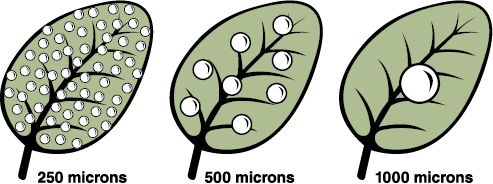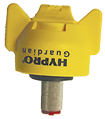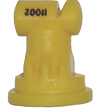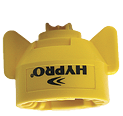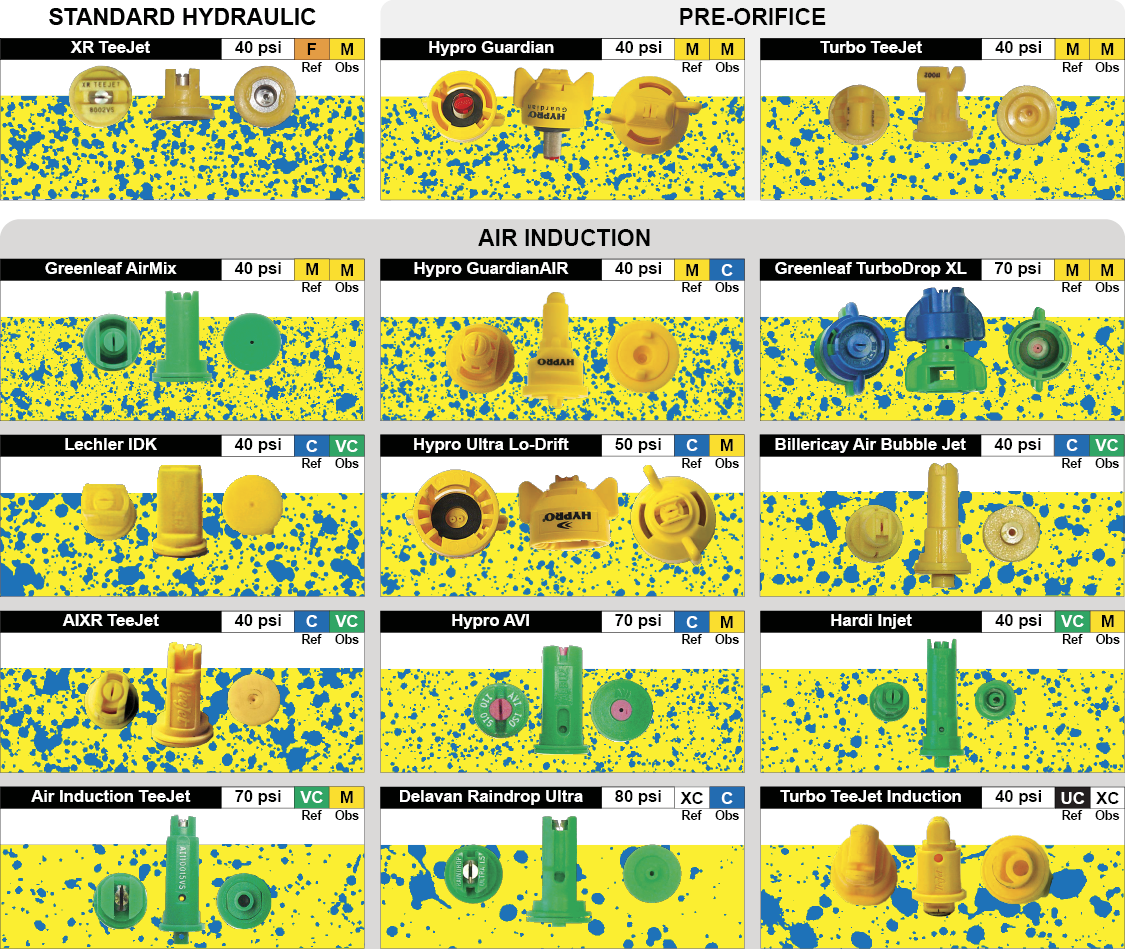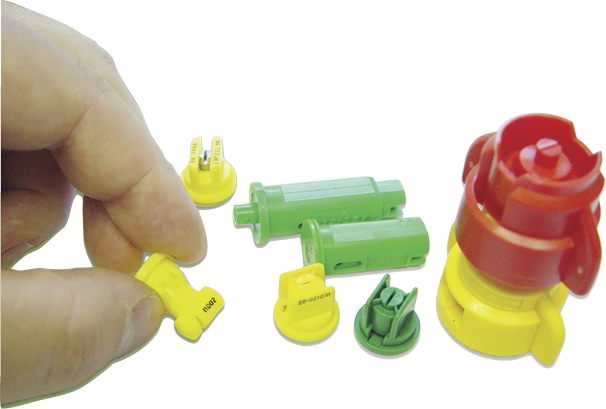Drift-reducing nozzles help to ensure that a greater proportion of spray droplets travel to their intended target. It is equally important to provide a sufficient number of droplets to cover the spray target and that these droplets exist in a form that will impact and be retained on the target. Therefore, in addition to drift potential, applicators must consider target species and coverage requirements when selecting nozzles and resultant spray quality.
The labels for fungicides, insecticides, and contact herbicides often recommend the use of a medium to coarse spray quality, while labels for soil-applied insecticides and systemic herbicides often recommend coarse spray quality, which is more resistant to drift. Some herbicides recommend the use of extremely coarse or ultra coarse spray quality for even better drift control.
Some weeds are more difficult targets than others, particularly small weeds under a dense canopy or difficult-to-wet weeds, such as lambs quarters and grasses. Sprays with finer droplet sizes may help supply effective coverage, but finer drops do not penetrate thick plant canopies as well as larger drops.
To make an effective pesticide application, water volume must be considered in tandem with spray quality. Application water volume is an especially important consideration when using drift-reducing nozzles, as they generate larger droplets than standard hydraulic nozzles. At a given water volume, doubling droplet size reduces droplet number eightfold (Figure 5). Therefore, the larger droplets produced by drift-reducing nozzles may need to be paired with greater water volumes to ensure adequate spray coverage.
Relationship between droplet size and droplet number. Sixty-four droplets with diameters of 250 microns each would reduce to eight droplets at 500 microns diameter and one droplet at 1,000 microns diameter.
This matrix illustrates the relationship between droplet size, water volume and coverage (Figure 6). The degree of coverage represented in the middle panel, with coarse spray quality and 8 gallons per acre (gpa) water volume, is a good starting point for pesticide applications where coarse spray quality would be desirable. As droplets get larger, at very coarse and extremely coarse spray qualities, there are fewer of them, and coverage may be compromised. To compensate for this, use higher water volumes.
Note that as droplets become finer, there are more of them, and coverage is increased. However, these cards were sprayed under controlled conditions. Therefore, the degree of observed coverage is truly hypothetical, especially under a fine spray quality, as many of these drift-prone droplets would drift off target.
Matrix of water-sensitive papers sprayed under controlled conditions at three water volumes (4, 8, 12 gallons per acre [gpa]) and five spray qualities (F, M, C, VC, XC), illustrating the relationship between water volume, spray quality and coverage.




